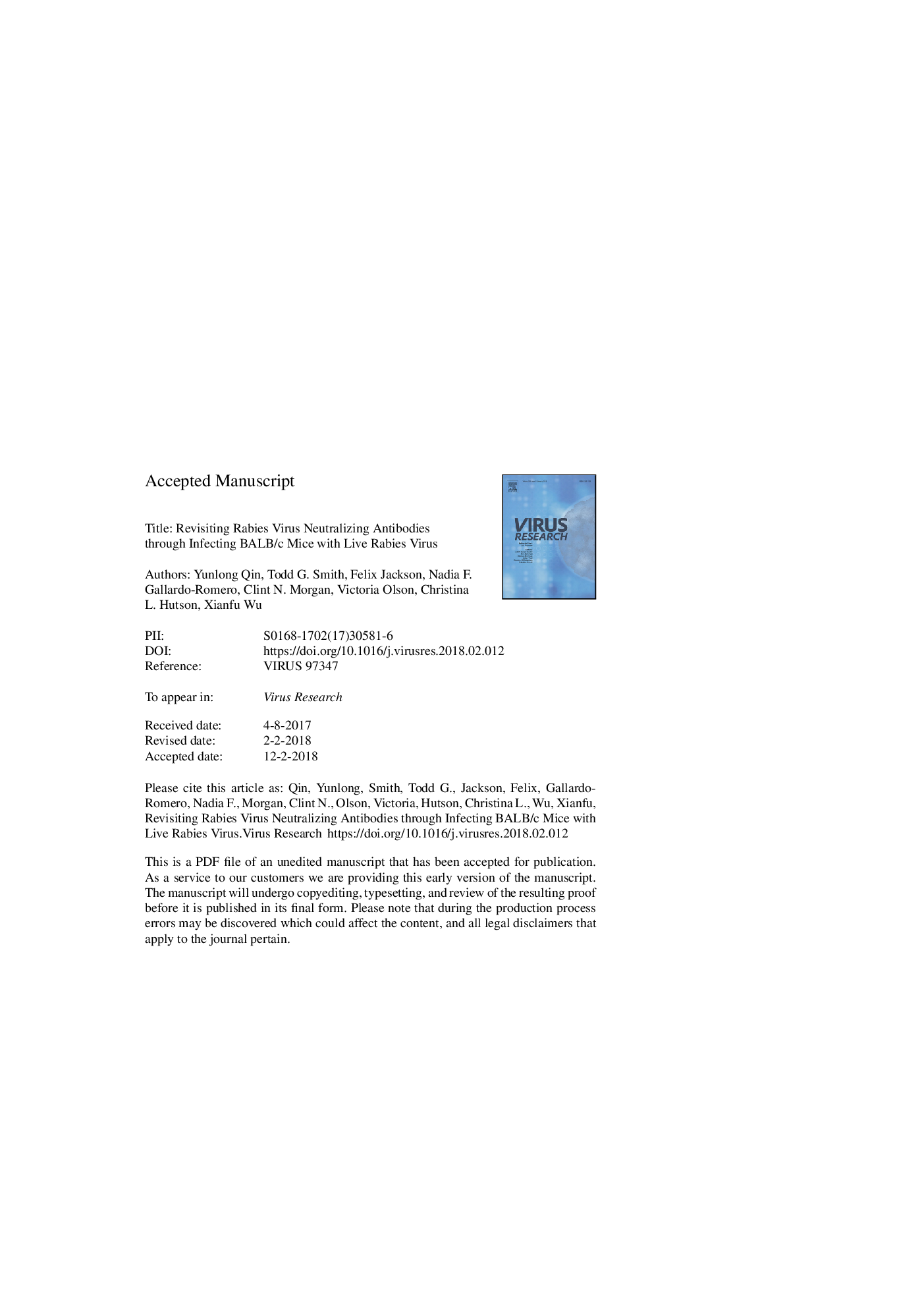| Article ID | Journal | Published Year | Pages | File Type |
|---|---|---|---|---|
| 8751864 | Virus Research | 2018 | 16 Pages |
Abstract
This study investigates the production of rabies virus (RABV) neutralizing antibody after virus infection through a mouse model. The BALB/c mice from different age groups (three, five, seven week old) were intramuscularly inoculated with live rabies virus (TX coyote 323R). Without pre-exposure or post-exposure prophylaxis (PEP), we found there is a decreased fatality with increased age of animals, the mortalities are 60%, 50%, and 30%, respectively. Interestingly, through assay of rapid fluorescent focus inhibition test (RFFIT), direct fluorescent antibody (DFA) and quantitative Polymerase Chain Reaction (qPCR), the results showed that all the animals that succumbed to rabies challenge, except one, developed circulating neutralizing antibodies, and all the healthy animals, except two, did not generate virus neutralizing antibodies (VNA). Our animal study suggests that the induction of VNA was an indicator of infection progression in the central nervous system (CNS) and speculate that RABV neutralizing antibodies did not cross the blood-brain barrier of the CNS for those diseased animals. We hypothesize that early release of viral antigens from damaged nerve tissue might potentially be a benefit for survivors, and we also discuss several other aspects of the interaction of RABV and its neutralizing antibodies.
Related Topics
Life Sciences
Immunology and Microbiology
Virology
Authors
Yunlong Qin, Todd G. Smith, Felix Jackson, Nadia F. Gallardo-Romero, Clint N. Morgan, Victoria Olson, Christina L. Hutson, Xianfu Wu,
